On May 28, 2021, Maserati celebrated the 60th anniversary of their Nürburgring 1,000 kilometers win with the Tipo 61. The 7th endurance classic race was held at the Nordschleife in Germany and was at the peak of its popularity during this era.
Masten Gregory and Lloyd Casner’s achievement in the Maserati Tipo 61 immediately became a memorable win as it became back-to-back victories for Maserati. This win came just one year after Stirling Moss and Dan Gurney won the race in 1960.

The champion Tipo 61 cars were presented in white and blue paintwork, the colors that were the inspiration behind the Maserati MC12 Stradale, a nod to their two wins. The supercar commanded the early 2000s and recently passed on the mantle to the new MC20, which has rekindled the racing spirit that has been part of Maserati’s DNA, paving the way for the marque’s motorsport comeback.
Giulio Alfieri designed a series of five models with the Tipo 61 being the most well-known of the series.

It was bestowed the nickname ‘Birdcage’ due to its unusual chassis, being an elaborate structure with around 200 tubes, matched with an intricate assembly that resembled a birdcage.
The construction method provided the Tipo 61 with a more rigid chassis and additionally was lighter when compared to other race cars of its time.
All these features made the two-seater Barchetta the ultimate and most ideal solution for front-engined, rear-wheel-drive racers.

March 1959 saw Maserati start producing the Tipo 60 however by November in the same year, it was already being converted into the Tipo 61. This was to adhere to the technical regulations that the Le Mans 24 Hours demanded so as to compete in the race.
The four-cylinder engine’s displacement was adjusted to 2,900cc, with its power output achieving 250 horsepower at 7,000rpm. The vehicle, however, kept the layout and solutions that were employed for the Tipo 60. An additional 30 kgs were added to the weight, increasing it to 600kg from 570kg while its top speed was raised to 177 mph from 168mph.

Despite the massive power output of the automobile, the fuel consumption was still rather low, a vital factor during endurance races, allowing the Tipo 61 to minimize the number of refueling stops.
During the production years, from 1959 to 1961, the Maserati Tipo 60 and Tipo 61 dominated the international racing scene. Its power and speed were fundamental to their remarkable victories.
[Source: Maserati]


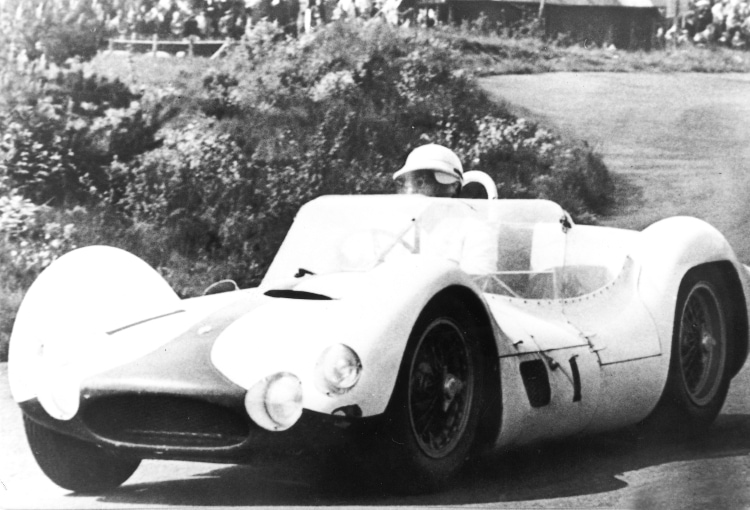
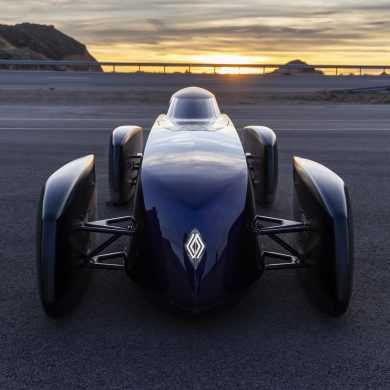
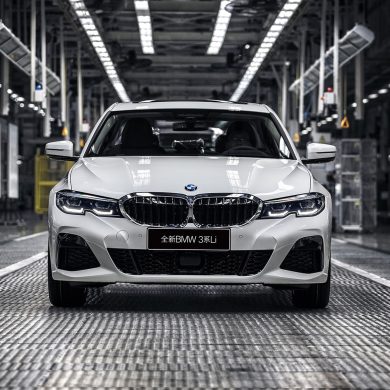
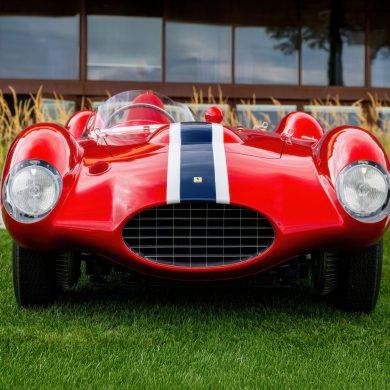

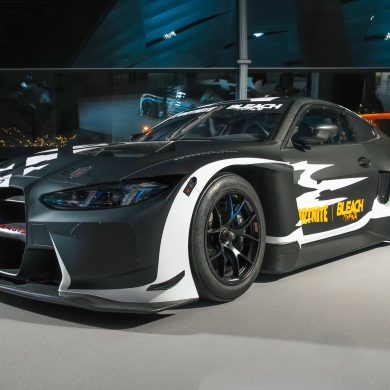



The paint scheme was from the Camoradi USA team run by Lucky Casner. Based in Miami, Florida, USA. (my father drove me to see their garage set up in a seedy industrial park as I was not old enough yet to drive.)
It must have been exhilarating for the drivers in these opened racer cars of the day. I cannot imagine driving a convertible race car over 175mph on those skinny tires. Crazy! Carroll Shelby did it in an open top Aston Martin in 1959 at LeMans. Remember these guys ran to their cars at the start of the race too.